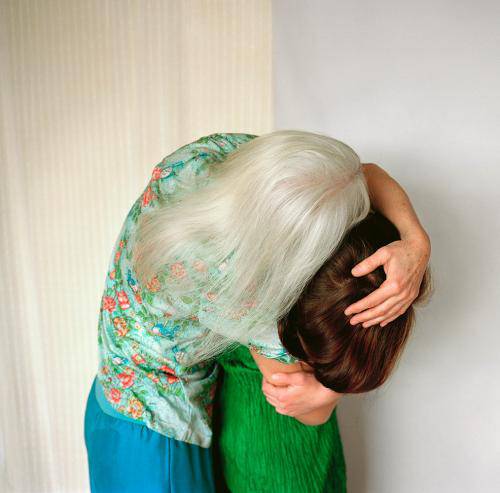INHALE is a cultural platform where artists are presented, where great projects are given credit and readers find inspiration. Think about Inhale as if it were a map: we can help you discover which are the must-see events all over the world, what is happening now in the artistic and cultural world as well as guide you through the latest designers’ products. Inhale interconnects domains that you are interested in, so that you will know all the events, places, galleries, studios that are a must-see. We have a 360 degree overview on art and culture and a passion to share.

The exhibition FACELESS at freiraum quartier21 INTERNATIONAL explores the phenomenon of inescapable recognizability in the media and the resulting strategies of media users to become virtually faceless. FACELESS takes a radical look at this fairly recent phenomenon of everyday media culture and shows how it manifests in visual art, fashion, photography, advertising, and dance. The show features works by artists like Marina Abramović, Thorsten Brinkmann, and Maison Martin Margiela as well as projects created by unknown Internet dwellers.
The highly diverse strategies and methods of making faces “disappear” on the Web can be read as ironic, angry, or justified criticism of our media-infused reality. Faces do not disappear, but are manipulated beyond recognition, sometimes disfigured. The artist Bogomir Doringer, in collaboration with Brigitte Felderer from the University of Applied Arts Vienna, curated the two-part exhibition FACELESS. Part 1 is on view from July 4 to September 1, 2013.
“Many of the faces that appear on the Web are familiar and well-known. We recognize them, associate biographies, scandals, stories with them, and get the impression of gaining an insight into a personality and even witnessing an entire life. But in the end, the physiognomies we encounter only reflect our own personal concept of happiness, recognition, attention, and success,” says Brigitte Felderer.
“FACELESS critically examines problems of our media culture and presents the various approaches taken by the artists selected. Due to the complexity of the subject, the exhibition will be shown in two parts, a first for freiraum quartier21 INTERNATIONAL,” adds Dr. Christian Strasser, director of the MuseumsQuartier Wien.
After the events of 9/11 and in response to the fear of terrorist attacks, the levels of transparency and control have been taken to areas where they would have been unthinkable before. This has led to a change in security concepts and the expansion of surveillance systems. Social networks, which often violate privacy but promise their users popularity in exchange, have become the norm. Many artists critically engage with this subject and use “hidden” faces as a possibility to live an unobserved life.
Artist Thorsten Brinkmann, for example, presents self-portraits that in color, pose, and composition are reminiscent of classic portrait painting. But used and discarded everyday objects replace his facial features. Masks and head coverings from fashion labels like Maison Martin Margiela, Viktor & Rolf, and Bernhard Willhelm suggest that models’ faces have been redundant for the presentation of collections.
Conversely, a public persona like Marina Abramović attempts to relativize her high recognition value in photographic self-portraits. Frank Schallmaier, in turn, makes collages using photographs that he finds in social networks and online matchmaking sites for homosexuals: they portray people who show themselves, but hide their faces with the promise of retaining anonymity. Hester Scheurwater’s photographic works examine the media representation of women as objects of desire. In Ute Klein’s photographs the bodies of lovers melt into temporary, faceless sculptures. The self-portraits of Nienke Klunder parody the banal omnipresence of erotic images.
The side program of the exhibition includes special events, artist talks, workshops for kids and teens, and podium discussions. On opening night, visitors will be able to participate in the performance “Anonymity” by Addie Wagenknecht and Stefan Hechenberger, a playful critique of surveillance society. Black glasses distributed to the visitors are reminiscent of censor bars and images from surveillance cameras make the observed into observers. Addie Wagenknecht and Stefan Hechenberger developed “Anonymity” in New York and adapted it for the opening of the exhibition FACELESS. The performance is documented by ARISTIC BOKEH, an initiative to qualitatively explore, map and extend the electrosphere with parameters of artistic research and development. The initiative is part of the project Artistic Technology Research at the University of Applied Arts, Vienna.
Artists:
Marina Abramović (SRB/USA), Marc Bijl (NED/GER), Thorsten Brinkmann (GER), Ondrej Brody (CZE) & Kristofer Paetau (FIN), Asger Carlsen (DEN/USA), Nezaket Ekici (TUR/GER), Shahram Entekhabi (IRI/GER), Caron Geary aka FERAL is KINKY (GBR), David Haines (GBR/NED), Ren Hang (CHN), Sabi van Hemert (NED), Ursula Hübner (AUT), Damier Johnson aka REBEL YUTHS (NGR/ITA), Brian Kenny (USA), Ute Klein (GER), Nienke Klunder (USA), Manu Luksch (AUT/GBR), Zachari Logan (CAN), Maison Martin Margiela, Slava Mogutin (RUS/USA), Veljko Onjin (SRB), Bernd Oppl (AUT), Tanja Ostojić (SRB/GER), Gareth Pugh (GBR), Eva-Maria Raab (AUT), Ana Rajcevic (SRB/GBR), Tarron Ruiz-Avila (AUS), Viktor & Rolf (NED), Daphne Rosenthal (NED/USA), Mustafa Sabbagh (JOR/ITA), Olivier de Sagazan (FRA), Daniel Sannwald (GER/GBR) for WOODKID, Frank Schallmaier (NED), Hester Scheurwater (NED), Jan Stradtmann (GER), Sergei Sviatchenko (UKR/DEN), Jun Takahashi for UNDERCOVER (JAP), Marc Turlan (FRA), Levi van Veluw (NED), Philippe Vogelenzang & Majid Karrouch (NED), Addie Wagenknecht (USA) & Stefan Hechenberger (AUT), Katsuya Kamo for Junya Watanabe COMME des GARÇONS (JAP), and Bernhard Willhelm (GER/FRA). Some of the artists will prepare their works as Artists-in-Residence at the MuseumsQuartier.
via mqw.at


































































